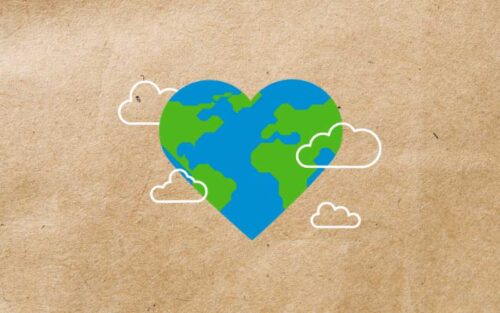Reduce Emissions With Distance Learning

Normally, when you assign a module to your team in your learning management system, you’re probably doing so because eLearning benefits them and your organization.
You can quickly assign them a compliance course, for example. Or you can make sure that remote team members brush up on important information wherever they happen to be — but eLearning isn’t just good for you and your employees; it’s also good for the planet.
A study conducted by the Open University of Britain found that distance learning consumes almost 90% less energy and produces 85% fewer CO2 emissions than traditional learning. While this paper was published in 2005, and distance learning has certainly changed for the better in 15 years, it’s currently the only study of its kind and offers the best analysis of how training impacts the environment.
But wait — how can traditional training be bad for the planet?
It might be surprising to think of something as simple as workforce training as being bad for the environment, but consider what training has looked like until now.
Often, training has required your employees to get on airplanes, or drive to a remote training site, where they’d spend one or more days in training sessions surrounded by other trainees who flew in on other airplanes, or drove in their own cars. Depending on how big that training event is, that’s a lot of emissions.
Take airplanes, for example. Just one commercial airplane burns one gallon of fuel a second, and is capable of burning 36,000 gallons in one 10-hour flight. This is why one of the most important things we can do to reduce emissions is to avoid airplane travel, according to environmental activists. Close to 2.4% of all global CO2 emissions come from aviation. Cars are also big gas guzzlers, and although they burn less fuel individually than airplanes. According to the U.S. Energy Information Administration, in 2019, Americans used an average of about 389.68 million gallons of gasoline a day. All that travel to and from events is bad for the environment.
The Open University study had similar findings, although that report was campus-based. That report found the biggest impacts distance learning had on emissions were due to lower student travel. It also found that use of fewer resources on campus, like paper, ink and the elimination of energy consumption in on-campus buildings.
That’s the case for workforce training as well. In-person training events often rely on handouts printed on paper. There will also be other kinds of waste generated by an event, such as catering waste, like plastic water bottles, and coffee cups — and only 1 in 5 plastic bottles is actually recycled. The rest becomes litter or enters a landfill, where it will take 700 years to decompose.
At this point, you might be thinking that there are other kinds of traditional workforce training that create less waste, like smaller training events that happen in the office. That’s true — the carbon footprint for those events are much smaller. However, it’s not nonexistent; printouts are usually used for those as well, and that creates waste. According to the Environmental Protection Agency, the pulp and paper manufacturing industry produces the sixth most air, water and land emissions in the U.S. In Canada, the paper industry produces the third most pollution. Printer cartridges are another story. More than 375 million empty ink and toner cartridges are thrown out every year, and while some of them are recycled, many aren’t — some are thrown away, and others aren’t completely recyclable. Those that are tossed can take 1,000 years to decompose.
How can eLearning reduce emissions?
By this point, you’ve probably got a pretty good idea of why online learning is good for the environment.
When your team logs into your organization’s LMS, they don’t have to go anywhere. The eLearning comes right to them. It’s a complete reduction in your team’s travel emissions; they can learn wherever they are, on whatever device they happen to be using at the moment. And there’s no need to bring a trainer to them either, obviously. Your team can learn from any trainer, no matter where that trainer happens to be in the world.
There’s also no need to print anything out. All of your learning materials are digital and waiting for your learners online, wherever they are, so you don’t need to waste any paper or ink cartridges. And of course, there is no need to cater your training either. Your team can drink their own tea and coffee from their own mugs, at their own desks or in their own homes, without adding waste to any landfills. Your team might miss the free coffee, but they’ll thank you for the reduced travel time, the lack of paper clutter and the time spent away from their loved ones. And the whole planet won’t necessarily know it, but they’ll thank you for the cleaner air.





